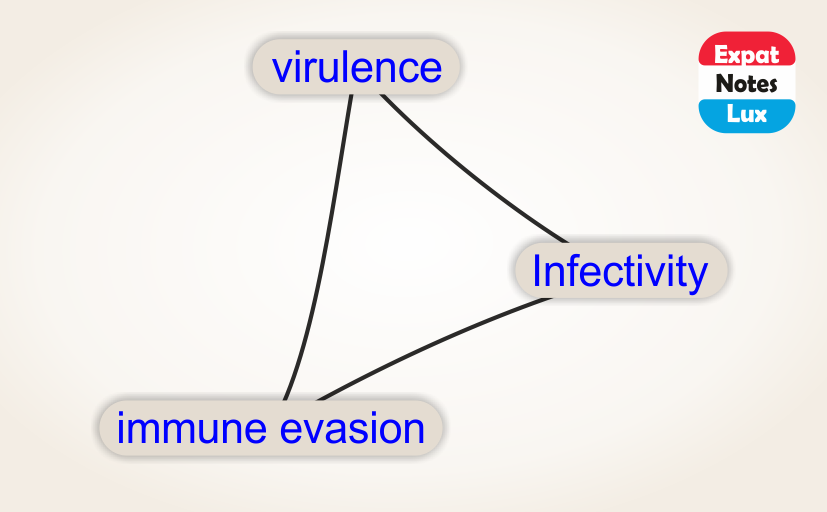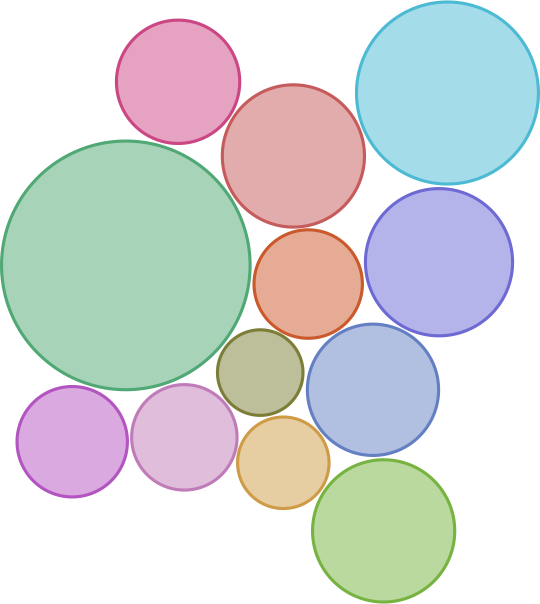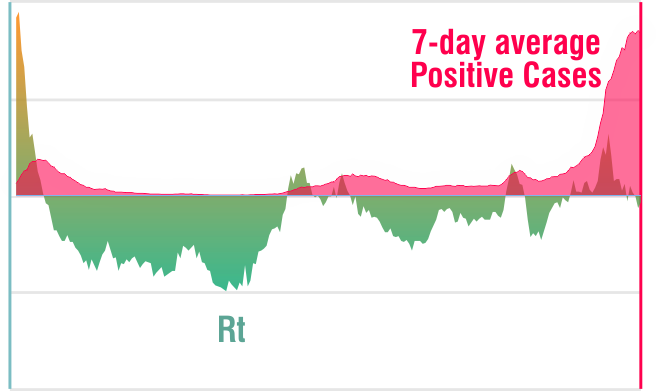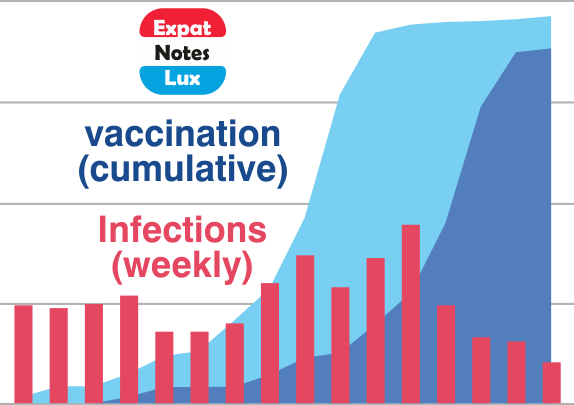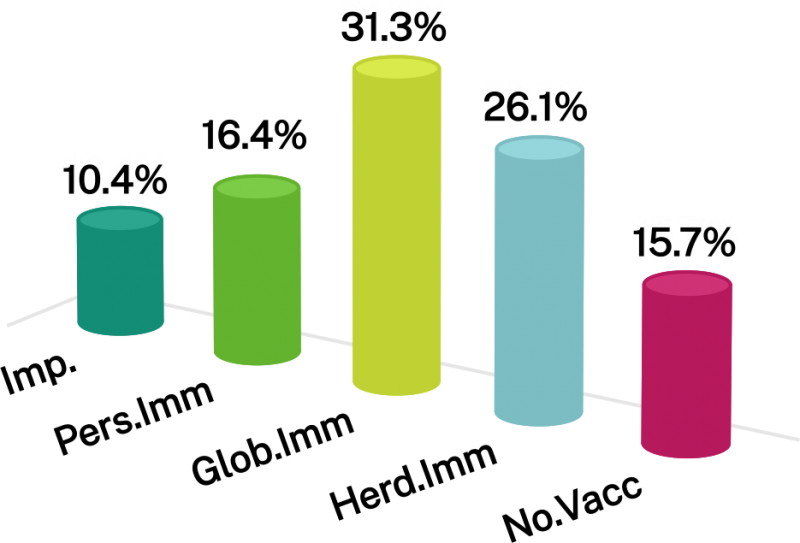first published : 12.11.2020
This is a OPINION PIECE and should be interpreted with CAUTION!
The text is ‘overtly simplified’ for general audience and DOES NOT CLAIM scientific accuracy but is only intended to present easy to understand information.
Does mutations have any role in the ‘second-wave’ across Europe?
Most likely, because the ‘near-exponential rise’ in daily cases across most of the central Europe could not be easily explained with a common factor, like ‘big lapses in hygiene’ as the measures (travel restrictions, obligatory masks, physical distance, large gatherings, etc.) were varied across the EU countries. The rise in cases started around September 2020 and at the same time two new CLADES (20A.EU1 and 20A.EU2) seemed to be found (sequenced) across EU.
The clades below are ‘clustered’ differently, starting with the first sequence from 2019 (hence 19A), which split into 19B (several mutations but out of scope of present discussion). The clade further split into 20A, 20B and 20C (three major clades as early as March 2020). Now the two interesting clades emerge from 20A around July 2020 (20A.EU1 and 20A.EU2) and gain relevance over time. The 20A.EU1 has about 11-22 mutations compared to 19A while 20A.EU2 has 20-30 mutations compared to 19A. Both the clades are still evolving!
The image below is created from the phylogenetic-tree of 3,581 SARS-CoV-2 genomes of European origin, samples sequenced between Dec 2019 and early Nov 2020 (as retrieved on 12.11.2020)
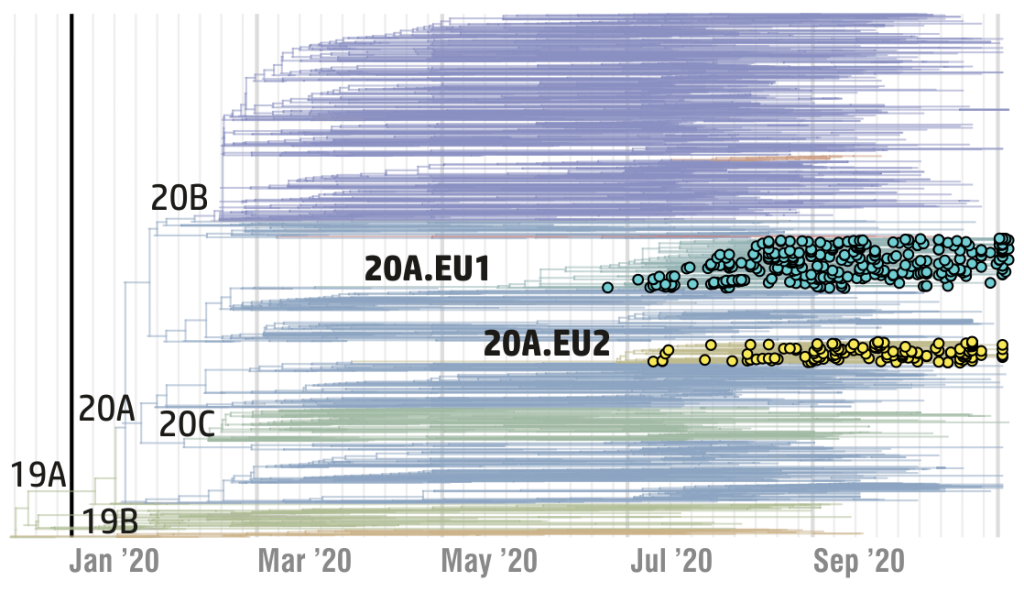
Looking closely for the relative abundance (frequency of sequenced sampled) as a function of time, the clades 20A.EU1 and 20A.EU2 seemed to be more active in the European population since July 2020 and are more abundant now, while in contrast, the clades 19A and 19B are almost negligible
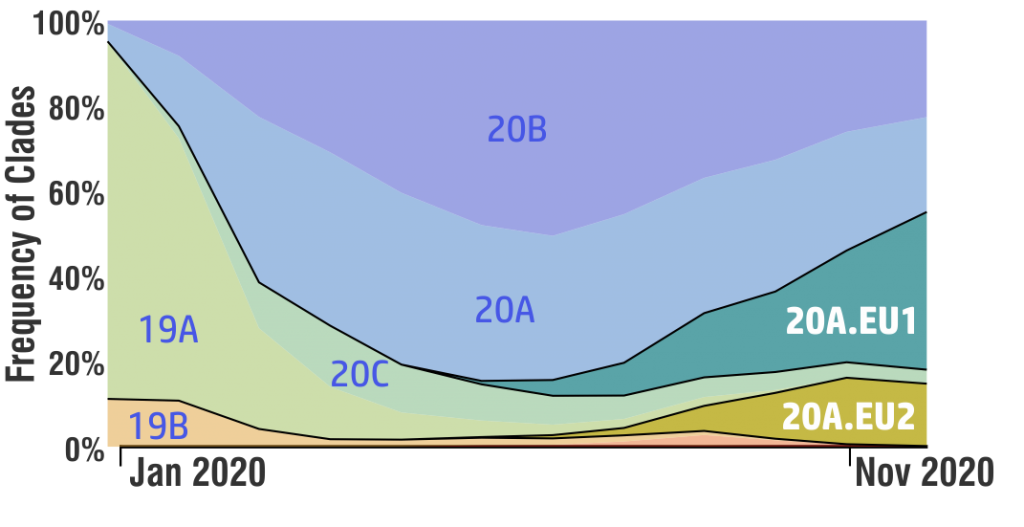
What now for Europe?
What now for Europe is the bigger and unknown question. If the evolving SARS-CoV-2 genome can yet again find another such ‘clade‘ (see note below) which gain traction in few months time, there may be a ‘third-wave’. It creates big dilemma for everyone, especially the governments and health agencies, to offer clear and ojective guidances to public.
It is also interesting to note that during the second wave, children and adolscents were less affacted compared to rest of the adult poulation (my be disputed as there is very limited age-group data available for European countries), could also be partly explained in such behaviour with the 20A.EU1 and 20A.EU2 strains.
Evolving New Clades: There are two clades already evolving from 20B (orange and red) which are phylogenitically different.

